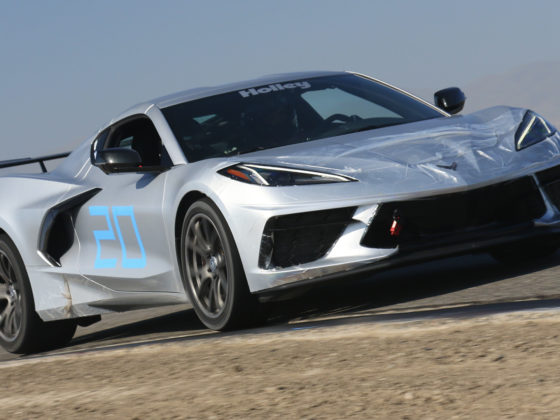
By using motor load, the SV-30 can graph the bore irregularities and display them on this LCD screen. You can actually see the bores get rounder and straighter in the display as the SV-30 goes to work. Subie cases really distort, so much that every bit of the 0.25mm oversize is used to get straight and concentric bores.

An IAG innovation we spotted was this custom tool head to incorporate a cutting hone and plateau hone in one operation. Plateau honing is a step that good engine builders like IAG (and us) incorporate where a special low abrasive stone is used to knock the sharp asperities off of the honed surface. Better ring seal, longer life, and less friction result from this. In this tool head, the bore is finished to the proper dimensions with the diamond cutting stones which are the silverish colored ones shown here. When the proper 99.75mm bore diameter is reached the cutting stones retract and the plateau finishing brush stones extend to but the super finish on the bores. This is cool and something we had never seen before.

After matching, the cases are thoroughly cleaned in this big ultrasonic cleaner. Normally they would be done and ready for assembly but we had IAG ship ours to us so we could apply the MotoIQ touch to them.

We then set about to take perfection up a little bit. We sent our cases to CTP Cryogenics for cryo treating. Cryo treating involves slowly cooling the cases to the temperature of liquid nitrogen, then gradually warming them to ambient temperatures over the course of many hours. Cryo treating is an extension of the heat-treating process which stress relives the parts and coverts the crystalline metal structure of the ferrous metal in the cases, like the cylinder sleeves from a Face Centered Cubic Crystal structure called Austenite to the harder and stronger Body-Centered Cubic structure Martensite. Cryo treating does this just as heat treating does but it further improves the conversion of Austenite to Martensite. This gives the metal a more homogeneous structure across its surface to the core and greatly improves, hardness, wear resistance, fatigue strength, and tensile strength.

Next, WPC applied their surface hardening, friction-reducing surface treatment to our cases cylinder liners. You can see the lustrous and smooth WPC-induced sheen on the bores in this picture.




8 comments
Hi Guys,
Love this article – I’ve got one question about the sequence of steps, specifically the CTP Cryogenics treatment step coming in after the torque plate hone/bore. If the tensile strength of the metals are going to be increased would that mean that the same torque rating on the head studs would create less distortion and negate some of the benefits of using a torque plate while machining?
Thanks,
Nick
No.
Our Cryogenic services should come after rough boring, if needed, but before final honing.. Torque ratings should not be altered from specs.. All building techniques should be done to the highest standards not matter what. It is the same as procuring the highest quality parts one can despite sending parts for DCT (deep Cryo Treatment) and other enhancements such as WPC or DLC..etc
As a note, we did not measure any dimensional differences in our cases before and after cryo treating.
Do you notice any differences between the machine work done by Outfront on the video build and and IAG on this one? if so which would you recommend for a Subaru engine build?
They are both high quality jobs but from seeing the process firsthand, IAG has more control over their processes and more state-of-the-art machining centers. IAG also uses deck reinforcements using the same cast metal as the block which is more thermally compatible with the original case. IAG has the 14mm stud option vs 12.5mm. IAG has the receiver groove for O-Rings. These are incremental differences.
What effect , if any does the wpc treatment have on oil retention on the bores?
The dimpled texture probably improves it.